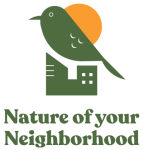It might seem surprising, but Capitol Hill can be a great place to experience nature. From massive redwood trees to miniscule moth flies, we share our neighborhood with a surprising diversity of more-than-human life.
We’ve documented hundreds of plant, animal, and fungi species along the 11th Avenue Biodiversity Corridor. Scroll or click a link below to explore the nature in Capitol Hill.
Trees and plants
Plants form the foundation of most ecosystems, including urban ecosystems. Trees are arguably the most important natural habitat feature for terrestrial wildlife in Seattle.
In his article “Special Capitol Hill Trees,” local plant expert Arthur Lee Jacobson writes, “No Seattle neighborhood is richer in trees than Capitol Hill.” Below are three outstanding specimens within the Biodiversity Corridor and where you can find them
Chinese scholar tree
Head to the northeast entrance of Cal Anderson Park to meet a gorgeous, sculptural Chinese scholar tree. This tree is a designated Seattle Landmark Heritage Tree. It’s more than 100 years old and Arthur Lee Jacobson claims it is the largest of its species in Washington State. Chinese scholar trees rarely bloom in Seattle, but you can count on this one—don’t miss its flowers in July and August.
Click here for directions to the the Cal Anderson Chinese scholar tree.
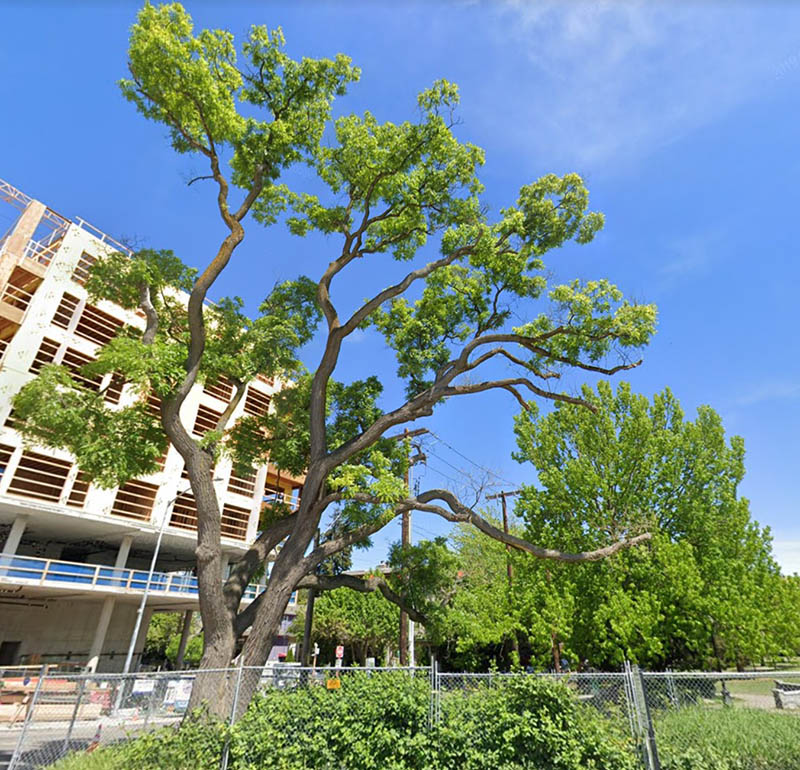
American elm
At the corner of 11th Avenue E and E John Street stands an beautiful American elm. It is taller than 65 feet with a trunk wider than a refrigerator. Its canopy spans more than 80 feet north to south and 50 feet east to west. The tree is impressive in any season. In winter, admire its fountain of limbs, branches, and twigs that climb upward and then arc downward, creating a dome. In spring, watch its thousands of papery seed pods float on the wind and accumulate like snow on the sidewalk. In summer, stand in the shade, close your eyes, and listen to the easy rustling of its leaves. In fall, the leaves turn a flamboyant reddish-gold.
Click here for directions to the American elm.
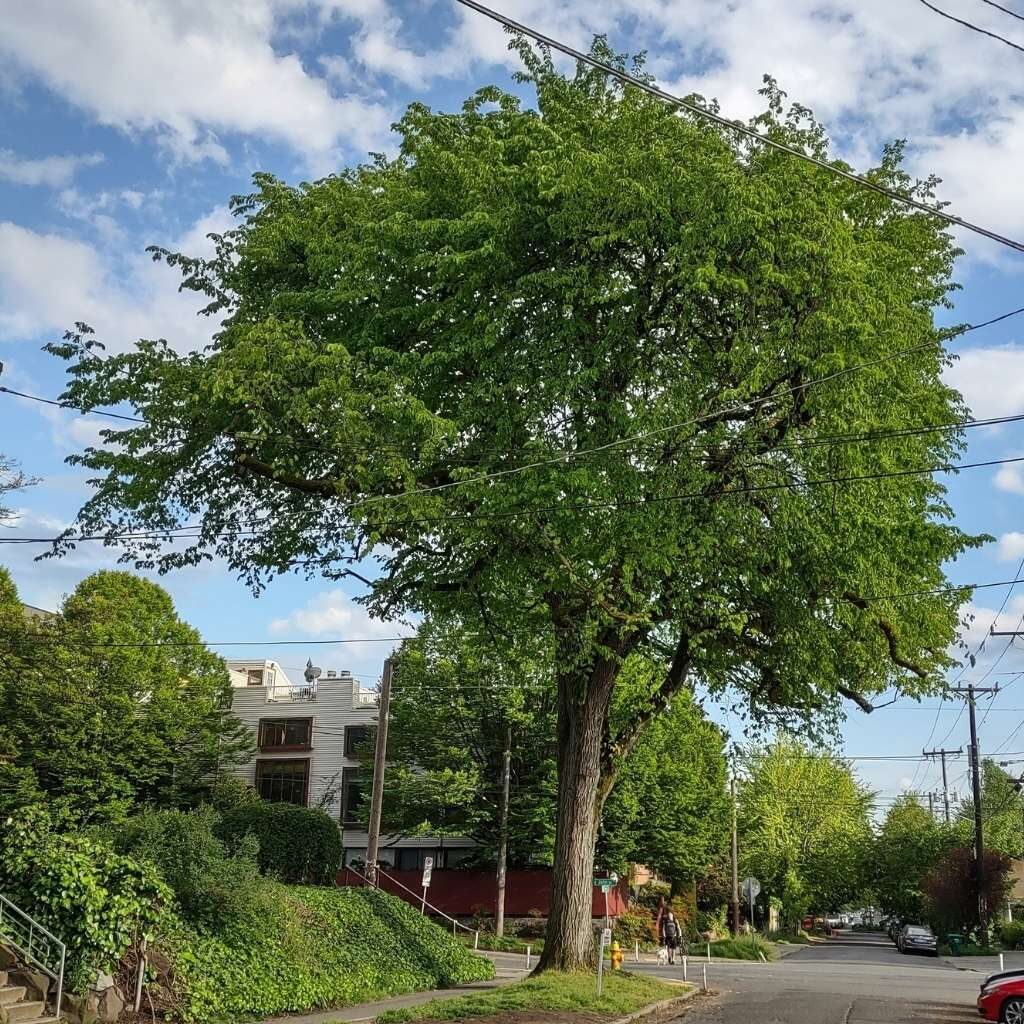
Giant sequoia
Sequoias are beings from the deep past. Ancestors of these massive, long-lived trees were the dominant tree in North America when dinosaurs ruled the world. Today, their range is much more restricted; their last remnant patches grow only along the eastern slopes of the Sierra Nevada Mountains in California. But you don’t have to visit the Golden State to see a sequoia. Giant sequoias grow well in Seattle. In fact, the tallest tree on the Seattle University campus is a giant sequoia.
The SU Sequoia stands outside the south entrance of the Pigott building. The Trees of Seattle University reports “In earlier years when the three was a slightly more manageable height, the grounds crew would decorate it for Christmas, stringing it with lights and placing a massive star on top. The tradition had to be discontinued once the height of the tree exceeded the reach of even the largest bucket lifts; continuing the tradition would be a costly and dangerous undertaking so now the tree rests undisturbed.”
Click here for directions to the Seattle University giant sequoia.
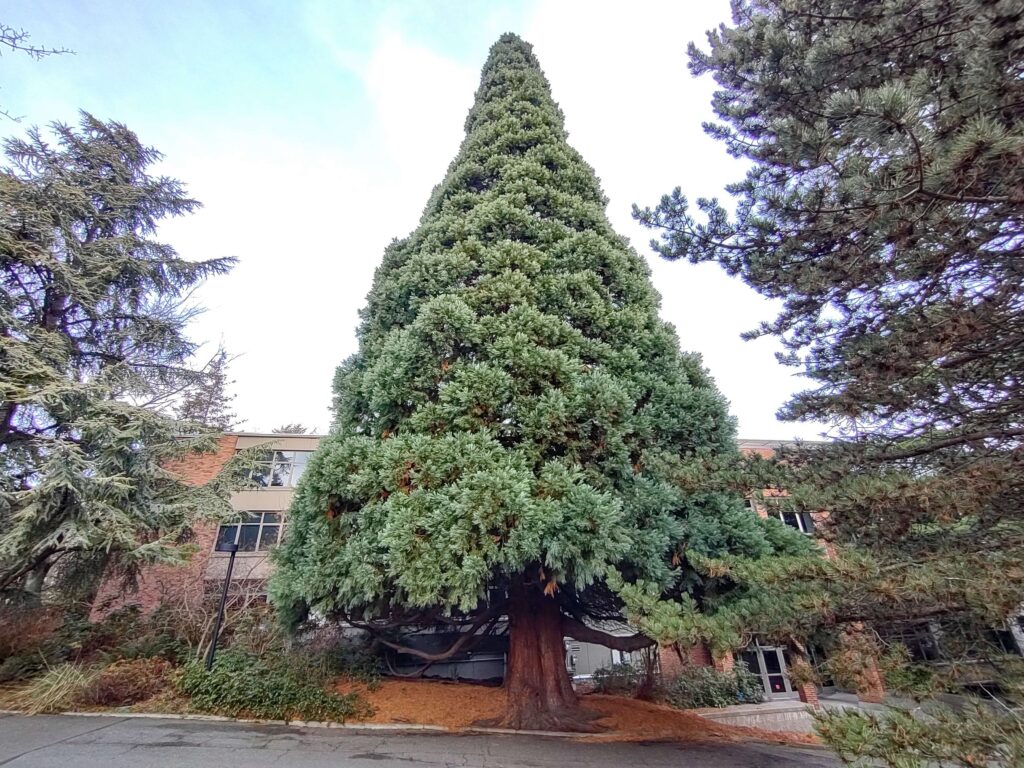
Explore more trees and plants of the Biodiversity Corridor
Mammals
The most abundant mammal species along the biodiversity corridor is humans. Perhaps 30,000 people live within or within a 10-minute walk of the area.
Other common mammals in the area tend to be associated with humans. These include our pets—cats and dogs, both of which are members of and have effects on the urban ecosystem. The rabbits we see everywhere were introduced by people, as were rats. A few native species still occur, and even thrive, including racoons and coyotes.
Birds
Birds are often the most conspicuous type of wildlife in cities. They are present nearly everywhere and provide urban dwellers with the opportunity to connect with and experience wildlife unlike any other group of animals.
More than 100 bird species have been reported from the Biodiversity Corridor. Here are just two you might see while you’re out for a walk.
Northern flicker
Northern flickers are woodpeckers. Larger than a robin but smaller than a crow, they are immediately recognizable. With their black bib and spotted breast and belly, there’s no risk of misidentifying this bird. Males, like the one below, have a red mustache. All are brightly colored on the underside of their wings and tail. In the Seattle area, most will flash brilliant orange or red. Rarely some will have yellowish undersides.
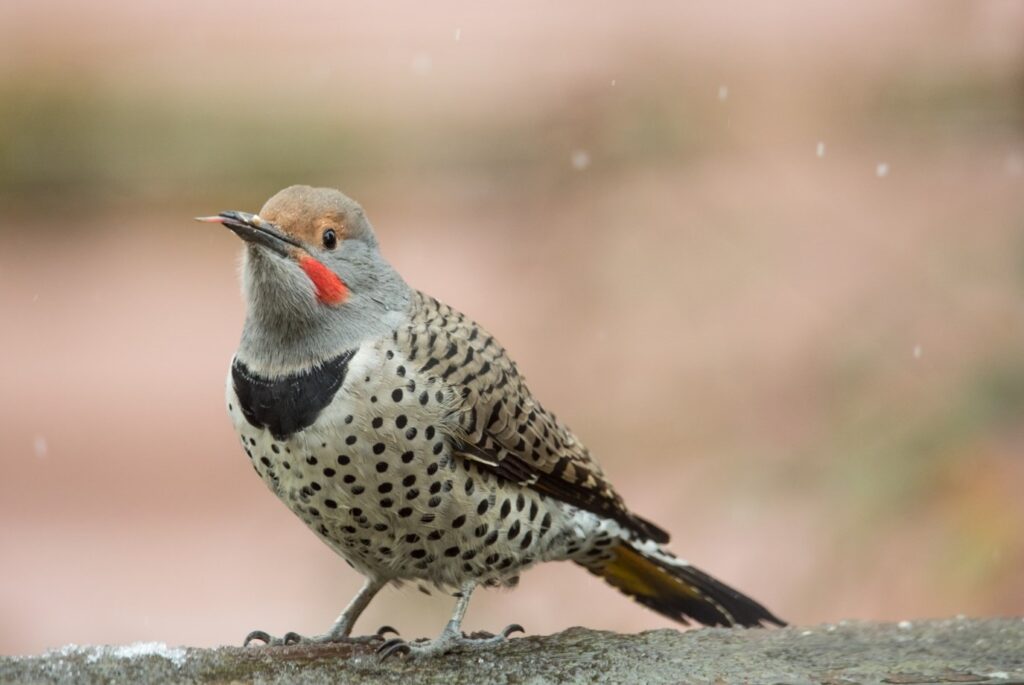
Look and listen for northern flickers year-round all over Capitol Hill. You’ll often encounter them on a sidewalk lapping ants out of cracks in concrete with their long tongues. They are vocal birds with distinctive calls. If you learn to recognize them, you will hear them nearly everywhere.
Bufflehead
Buffleheads are strictly winter visitors to Seattle. They are the smallest diving duck in North America. Adult males have a big white wedge on their heads. The rest of the head and throat are iridescent purples, blues, and greens, which abruptly transition to a white breast and sides and a deep-black back. The buffleheads that visit Seattle spend the summer farther north, breeding in the forests of British Columbia and Alaska. Their lives are tied tightly to northern flickers—buffleheads nest almost exclusively in cavities excavated by northern flickers.
The only place to see buffleheads in the Biodiversity Corridor is the reservoir at Volunteer Park. Look for them between November and April. You might catch them diving around feeding on insect larvae and other invertebrates thriving in the city’s emergency water supply.
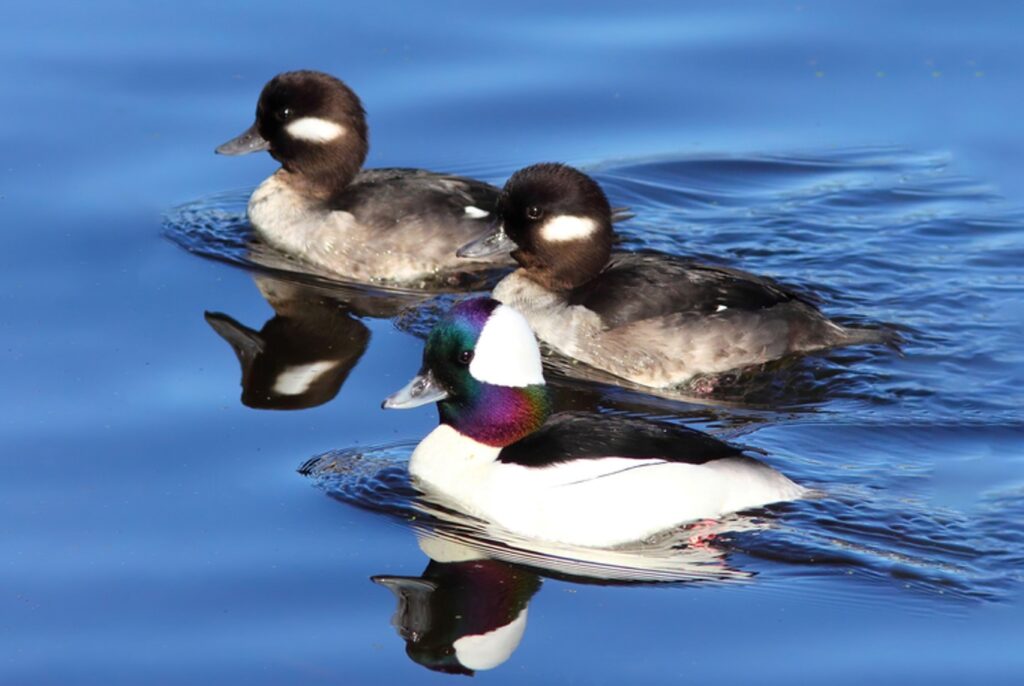
Explore more birds of the Biodiversity Corridor
Insects
Funny to think our lives and well being are tied to bugs, but it’s true. We need insects to pollinate food crops and flowers, to decompose waste, and to serve as strands in the food web for countless other creatures. There may be hundreds of different insects in Capitol Hill. Here’s one you might commonly find along the Biodiversity Corridor.
Yellow-faced bumblebee
Visit a flowering bush on a June afternoon, and before long, odds are you’ll encounter a yellow-faced bumblebee. This species is the most common bumblebee in our area. They are distinctively marked with black and yellow hairs. Look for yellow on the face, head, and in a band on the abdomen.
Yellow-faced bumblebees nest in colonies underground. They are successful in both urban and agricultural environments, but pavement and other hardscape in cities leads to lower nesting densities (Jha & Kremen, 2013).
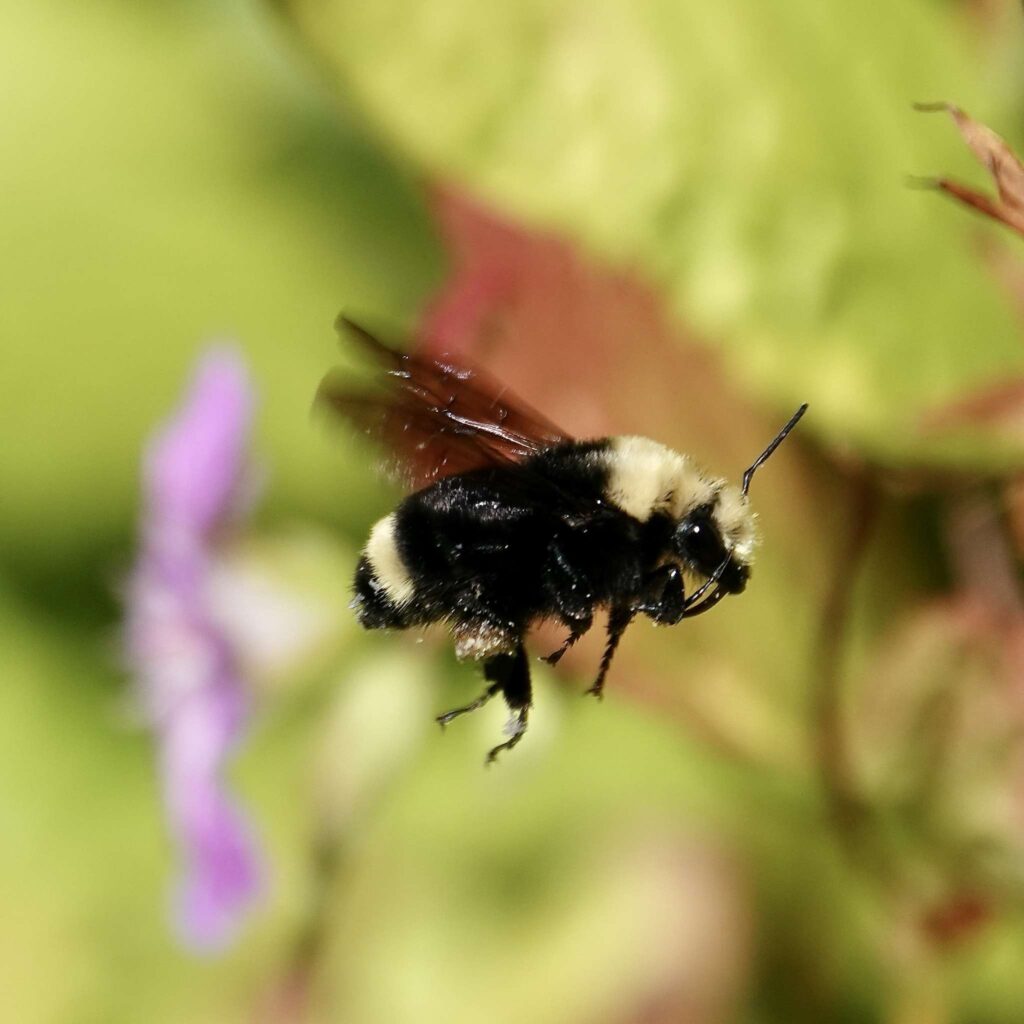
Explore more insects of the Biodiversity Corridor
Fungi
Fungi are all around us. Vast networks of fungal threads called hyphae decompose organic matter underground. Fungal spores float on the air. Even our skin is host to more than 100 different fungal species.
Fungi are essential to our urban ecosystem. They build healthy soils and help plants absorb nutrients. Some, however, are pathogenic. Various rots, rusts, soots, and molds can infect and harm trees and other plants.
Here’s one fungus from the corridor you may be familiar with.
Fly agaric mushrooms
Fly agarics are the inspiration behind the Super Mushroom power-up from Mario Brothers. Their bright-red caps speckled with white make them easy to identify. Around Seattle, fly agarics most commonly emerge in fall, brightening our parks, woods, and neighborhoods after the flowers of summer have faded.
Fly agarics form mutually beneficial relationships with many tree species, including firs, spruce, pine, oak, and birch. The underground “body” of fungi is a network of thin, threadlike structures called hyphae. The hyphae associate with tree roots. The roots share sugar with the fungi, and, in turn, the fungi share water and minerals with the tree.
Fly agarics are common around the world. They were unintentionally introduced in some areas where they are sometimes considered the mushroom equivalent of a weed.
Fly agarics contain psychoactive compounds ibotenic acid and muscimol that that can cause hallucinations.
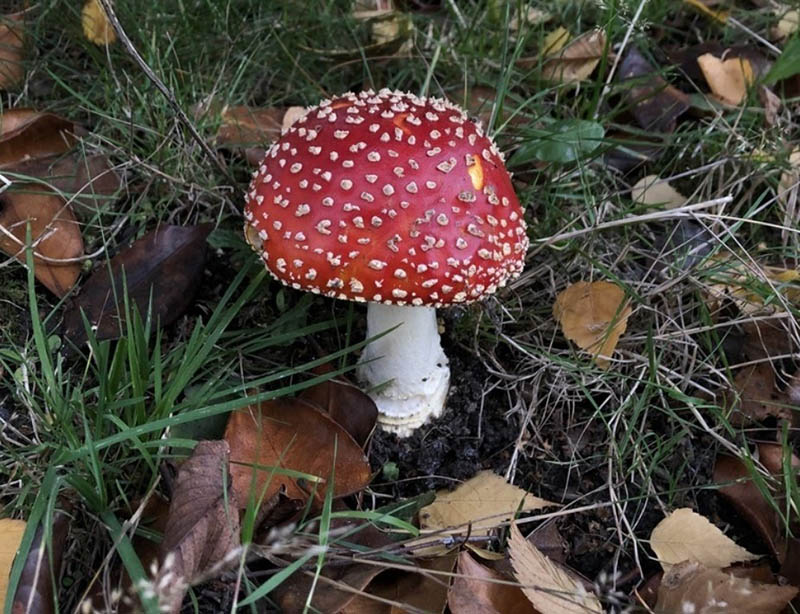
Explore more fungi of the 11th Ave Biodiversity Corridor
Help us document biodiversity
We need your help to document the biodiversity of the 11th Ave Corridor. You can contribute by reporting observations of nature to:

